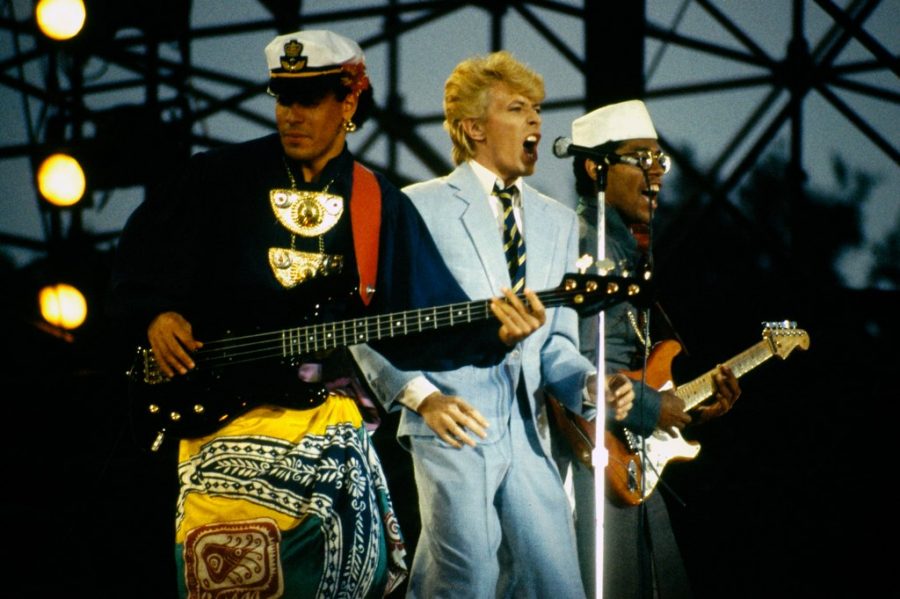Feminine stylings wear down ideals of toxic masculinity
Toxic masculinity is evident in much of modern history; however, glancing through the lense of historically attractive men, what the people have to say about who’s hot and who’s not may exemplify toxic masculinity more than previously thought.
Before we hold a conversation surrounding toxic masculinity, we must discuss exactly what defines the ideals that make up such harmful institutions and stereotypes.
“Toxic masculinity is what can come of teaching boys that they can’t express emotion openly; that they have to be ‘tough all the time;’ that anything other than that makes them ‘feminine’ or weak,” said New York Times journalist Maya Salam.
Ideals of toxic masculinity are omnipresent in modern society; whether it be stifling men’s emotions (citing that feelings are too “feminine”), suppressing traditionally feminine styles, or even defining outdated nuclear family ideals that demand a man be the head of a household.
“Toxic masculinity is hating on anything or anyone who doesn’t portray their image of being emotionally stone-cold or seem strong,” senior Jermaine Hudson said.
Utilizing public opinion may be beneficial while taking this dive into toxic masculinity. Nowhere is public opinion more prevalent than with who fans find attractive.
Early in the silver age of Hollywood, attractive men were stiff, rugged, and chiseled. Think James Dean, Gregory Peck, and Humphrey Bogart. These actors represent a time where men were expected to be tough and strong, defining the standard definition of stereotypical masculinity.
Hindsight is 20/20. Glancing back on this era, where the entertainment industry was just taking root, picking apart the harm these stereotypes reinforce is easy work. Why then are we still stuck attempting to clear the same hurdles?
The days where silver screen darlings were seen as the gold standard soon passed. Enamored audience members became enthralled listeners as a new kind of man entered the scene: the rock star.
For 30 years (beginning in the 60s), rock stars were all the rage. The Beatles topped the charts, Mick Jagger captured crowds with his dance moves, and Prince began a fashion renaissance.
These rising stars could not have been more different than the burly men idolized before them. David Bowie was no John Wayne, so why were these musicians receiving such attention?
In short, the answer is freedom. When rock stars played sold-out shows dressed in checkered leotards and wrote albums telling the story of androgynous space aliens, they proved that the term “man” is not confined to a box. No longer were they forced to be stereotypically “manly.” For the first time, men were showing comfort in their femininity (and, in turn, security in their masculinity) and receiving world-renowned praise for it.
“Styles like these were some of the first major breakthroughs for toxic masculinity. High-profile celebrities like Prince and David Bowie going against gender norms brought attention to these toxic ideas,” junior Dani Sein said.
Just as the saying goes, all good things come to an end. The 90s began, and as such, the age of the “pretty boy” began. Eyes turned back to the screen, where young movie stars such as Leonardo DiCaprio, Johnny Depp, and River Phoenix amassed attention.
These stars were a departure from the rock stars of years past, a sort-of stepping stone leading into the modern era’s idea of an attractive man, a revival of the traditionally feminine stylings of men such as Prince, Bowie, and Freddie Mercury.
“With more and more men wearing what some may call ‘feminine,’ it’s slowly opening a door that helps us clear toxic masculinity or, at least, some of it,” sophomore Sam Mayo said.
Today, men proudly sport dresses on the cover of Vogue magazine, paint their nails, and don crop tops simply for the fun of it; at large, society no longer estranges itself from those unafraid to shatter the glass ceiling.
“People should be able to wear whatever they want to and not be labelled ‘non-masculine,’ nor should people assume their gender or sexuality based on what they wear,” said Mayo.
By dressing in stereotypically feminine attire, men are eliminating the binary that demands boys and girls only wear certain articles. While not a catch-all for the problems that toxic masculinity creates, steps are being taken.
“The revival of these legendary styles brings back the image of femininity in men and aids in stopping the spread of toxic masculinity. By showing that these styles have been around for a while, it proves that feminine men are not a new concept,” Sein said.
Seeing as Harry Styles and Timothee Chalamet are currently seen as the most attractive working in the industry, times have changed magnificently from the days of Henry Fonda and Bing Crosby.
“The best way to get rid of these ideals is to just embrace them. It’s a part of life, so what’s the point in making such a big deal out of it?” said Hudson.

EDEN WALKER’s first love is writing. Having spent two years on staff already, they are excited to see what their third and final year writing for...




Cali Caputo • Feb 25, 2021 at 1:35 pm
Great point! It’s so interesting how people like David Bowie and Prince really helped progress not only the perception of men in music, but men in society as well!! They truly represent the feminist movement.